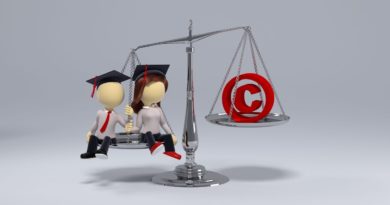Hudnell Law Group
The U.S. Patent Nos. 8,885,802 and 8,280,009 cover a remote control device with voice-over-internet protocol (VoIP) capabilities. 8,885,802 and 8,280,009, which cover a remote control device with voice-over-internet-protocol (VoIP) capabilities.
The Federal Circuit’s review encompassed the district court’s claim construction, the district court’s grant of summary judgment of non-infringement of the ‘802 patent, and the district court’s grant of judgment as a matter of law of non-infringement of the ‘009 patent. Nexstep argued that Comcast’s remote control system infringed the ‘009 Patent by performing the same function as Nexstep’s patent technology. Ultimately, the Federal Circuit found that Nexstep’s arguments regarding the evidentiary support for the doctrine of equivalents were insufficient, leading it to affirm the district court’s ruling in Comcast’s favor.
Nexstep’s doctrine of equivalents argument required it to make a detailed showing, as established by Federal Circuit precedent. This showing must include “particularized evidence and linking arguments” to support the equivalency of each limitation in the claim. Warner-Jenkinson Co. V. Hilton Davis Chem. Co., 520 U.S. 17, 29 (1997); AquaTex Indus., Inc. v. Techniche Solutions, 479 F.3d 1320, 1328-29 (Fed. Cir. 2007). This standard ensures that equivalency arguments are grounded in a detailed, limitation-by-limitation comparison between the patented claim and the accused product, providing the fact-finder with a clear framework for assessing each element’s equivalency. In this case, district court found that Nexstep did not meet this standard as its expert Dr. Ted Selker made only generalized statements about similarity. The district court referred to this as a “word salad” without specificity and analytical rigor. Nexstep, Inc. v. Comcast Cable Commc’ns, LLC, 2022 U.S. Dist. LEXIS 85842, at *20-*21 (D. Del. May 12, 2022).
In confirming the district court’s decision, the Federal Circuit emphasized the need for “the patentee to provide particularized testimony and a linking argument regarding the insubstantiality” of the differences between a claimed invention and an accused device. See Nexstep, Inc. v. Comcast Cable Commc’ns, LLC, no. 2022-1815, 2024 U.S. App. LEXIS 26867, at *26 (Fed. Cir. Oct. 24, 2024). According to this standard, Dr. Selker’s testimony was insufficient because she failed to link and identify each component of Comcast’s system with a corresponding limitation contained in the patent. Id. at *41-*42.
Additionally, the Federal Circuit clarified that this requirement for particularized testimony applies uniformly to all technologies–whether complex or easily understood. The court stated that the doctrine of equals requires the same amount of detail in simple cases and complex cases in order to prevent the jury making unsupported jumps in their findings. Id. at *49.
Accordingly, the Federal Circuit upheld the district court’s entry of judgment as a matter of law, concluding that Nexstep had not provided sufficient evidence to support its doctrine of equivalents claim under established legal standards. This ruling highlights the need for patent owners to craft doctrines of equivalents arguments with the same rigor that literal infringement analyses. To succeed, practitioners must provide “particularized testimony and linking argument” at a highly granular level, demonstrating a limitation-by-limitation comparison between the accused product and the patented claims. Patent holders may have their doctrine of equals assertions deemed inadequate if they do not apply the same detailed element-by-element examination to literal infringement claims. The Federal Circuit’s emphasis that a universal showing is required for both simple and complex technologies puts additional pressure on patent owners to prepare doctrines of equivalents arguments meticulously. The court has set high standards for all equivalency cases by requiring the same level and consistency of testimony, regardless of the technology’s complexity. Ultimately, Nexstep reaffirms the Federal Circuit’s stance that the doctrine of equivalents requires as much analytical depth as literal infringement–regardless of the technology involved.






